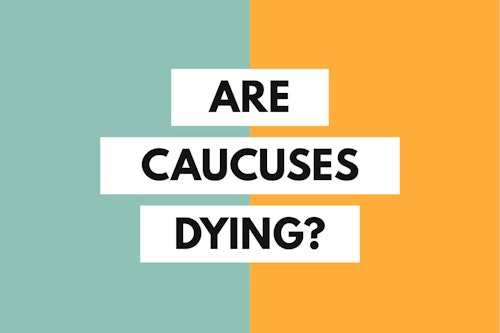Are Caucuses Dying?

Democrats have been allowing real voters to decide the party’s nominee since 1972. States and state parties can choose between holding a primary and a caucus to determine which candidate gets their delegates. Caucuses have substantially lower turnout than primaries and cater only to those who are willing and able to spend hours participating in a very public process. The results are often anti-democratic because of the high barrier to participate. They reward the most privileged and over-represent those on the political extremes. The following maps from the open Democratic nominations between 2000 and 2020 show that caucuses have been widespread for decades. However, thanks to state party and legislative leaders, the number of states using these unrepresentative contests to award their delegates has shrunk in advance of the 2020 Democratic nomination.
The decline of caucuses means that if multiple candidates go the distance, the 2020 Democratic Presidential nomination is set to potentially best 2008’s record of over 36 million primary voters. What this means is that people who want to participate in the 2020 Democratic primaries will have a much easier time making their voices heard. Democratic candidates will need to appeal to a broad coalition of potential voters—liberal, progressive, moderate, White, Black, Brown, wealthy, middle-class, working-class—rather than just those who can afford to spend time at a caucus. The 2018 midterms saw a record over 20 million people vote in Democratic primaries, and that large turnout helped nominate the type of unifying, non-fringe Democrats who could deliver a House majority. The same could well be true for the 2020 primaries.


Subscribe
Get updates whenever new content is added. We'll never share your email with anyone.
